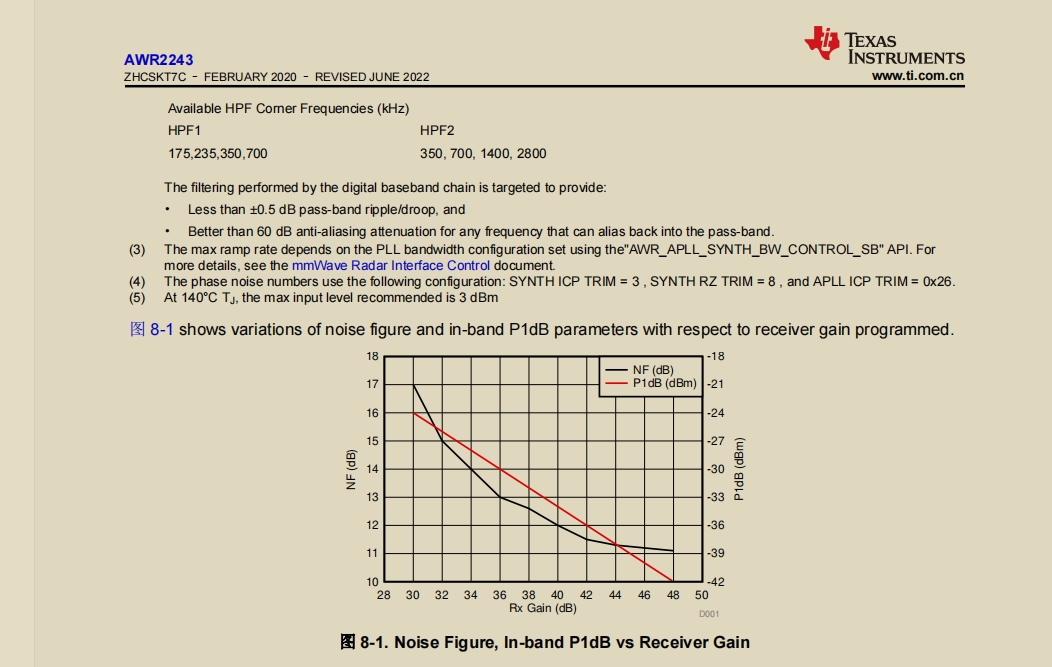Other Parts Discussed in Thread: AM2732
Tool/software:
Hi,
In the cascaded solution using AM2732 with 2* AWR2243;
I have conducted runtime calibration and boot-time calibration.
However, the RX gain and noise figures are inconsistent between the chips
my profile:
profileCfg 0.0000 78.000 5.0000 5.0000 20.0000 0.0000 0.0000 11.0000 0.0000 256.0000 20000.0000 0.0000 0.0000 180.0000
Rx gain:
devID:0
rxGainVal RF1: RX1:48.50, RX2:49.00, RX3:48.80,RX4:48.20 dB
rxGainVal RF2: RX1:48.60, RX2:49.10, RX3:48.90,RX4:48.30 dB
rxGainVal RF3: RX1:48.70, RX2:49.20, RX3:49.00,RX4:48.50 dB
devID:1
rxGainVal RF1: RX1:48.10, RX2:47.20, RX3:47.60,RX4:47.30 dB
rxGainVal RF2: RX1:48.10, RX2:47.30, RX3:47.70,RX4:47.50 dB
rxGainVal RF3: RX1:48.10, RX2:47.30, RX3:47.80,RX4:47.60 dB
devID0:
RxNoiseFig,devID0,Rx0: 13.50 dB,13.00 dB, 13.40 dB, temp:60
RxNoiseFig,devID0,Rx1: 13.60 dB,13.10 dB, 12.70 dB, temp:58
RxNoiseFig,devID0,Rx2: 13.20 dB,13.40 dB, 13.60 dB, temp:59
RxNoiseFig,devID0,Rx3: 13.80 dB,13.80 dB, 13.70 dB, temp:59
devID1:
RxNoiseFig,devID1,Rx0: 14.60 dB,14.40 dB, 14.10 dB, temp:60
RxNoiseFig,devID1,Rx1: 15.10 dB,14.70 dB, 14.90 dB, temp:58
RxNoiseFig,devID1,Rx2: 14.60 dB,14.30 dB, 14.40 dB, temp:59
RxNoiseFig,devID1,Rx3: 15.50 dB,14.80 dB, 14.80 dB, temp:59
my problem:
1、For Rx0,The RX gains of Chip 0 and Chip 1 are very close, but there is a difference of 1-2 dB in their noise figures
2、Why is there a comparatively larger difference, approximately 1 to 2 dB, in the RX GAIN for the RX2/RX3/RX4 channels between Chip 0 and Chip 1, whereas the difference in RX GAIN for the RX1 channel is very small, less than 1 dB?
anyone can help me?


